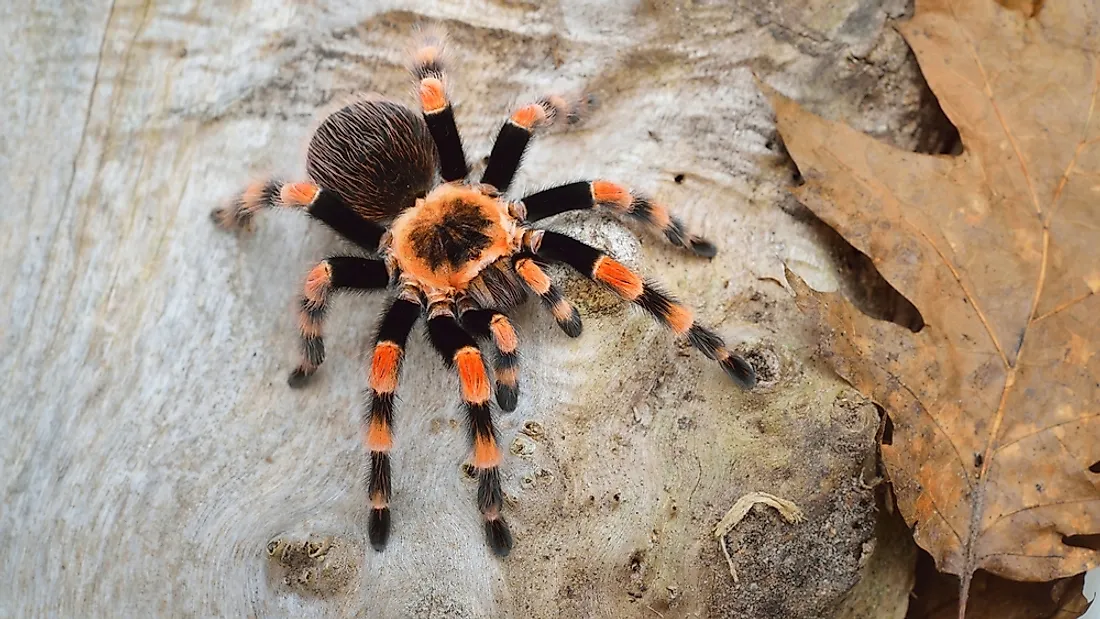What Are Arachnids?

Arachnids are a group of animals that belong to the Chelicerata subphylum of the Arthropoda Phylum. These invertebrates are joint legged with a distinct characteristic of having eight legs although in some species, the front pair is used for sensory purposes. Some species also have appendages that have grown big enough to be confused with another pair of legs. Although there are approximately 98,000 described species of arachnids, it is possible that there is an estimated 600,000 potential species. Spiders are the most populous of the Arachnida class with 40,000 species, alongside solifuges (900 species), mites (32,000 species), scorpions (2,000 species), ticks (12,000 species), and harvestmen (6,300 species).
Physical Characteristics
Most fully grown arachnids have eight legs with two more pairs of appendages than insects have. These are the chelicerae used for feeding and protection and the pedipalps which are used for reproduction movement and feeding. Not all Arachnidae have eight legs; there are species of mites with eight legs, six legs, and even four legs. Apart from their legs, arachnids are also different from insects in that they do not have antennae or wings.
Arachnids have an exoskeleton protecting their body organs and a second layer of protection that is made up of cartilage. This layer is called the endosternite. Their bodies are divided into two segments, the cephalothorax and the abdomen. The cephalothorax is a merging of the thorax and the head, which is then covered by one carapace. The stomach is internally segmented with differences occurring in species. The main division is the preabdomen and the postabdomen.
Although most arachnids pose no threat to humans, some species possess poison glands used to pacify prey. The harmful spiders include the black widow and the brown recluse spiders.
Habitat
Arachnids are mostly terrestrial animals, living on land. Some of the class members inhabit fresh and marine water bodies. Terrestrial arachnids include spiders, false scorpions, mites, ticks, and daddy longlegs among others. Some spiders live on or near water while some ticks and mites are parasitic. Some species of mites that live in soil are important in the conversion of dead lives to humus.
Despite their chitinous exoskeleton, Arachnids are susceptible to drying up; a condition referred to as desiccation. Arachnids prefer well covered and protected microhabitats with a lot of humidity and less light. The cave dwellers have special characteristics like long detachable body parts, bright colors, and the absence of eyes.
Reproduction
Arachnids are lucky to possess two gonads which are present in the stomach area. The privates opening is strategically located underneath the second abdominal section. Through very developed wooing rituals, the female is coerced into accepting the sperm package (spermatophore). The daddy longleg is the only exclusion to this kind of sperm delivery. They instead directly deposit sperm into the female using a chitinized penis that is introduced in the female’s genital opening.
Diet and Feeding
Most arachnids are carnivorous, mostly feeding on smaller insects with a few exceptions like the parasitic ticks and mites and the daddy long legs which eat plants. Arachnids feed by either waiting and attacking or actively seeking prey. The parasitic kind have improved mouth parts for sucking fluids from plants and animals.
Daddy long legs and house dust mites are the only arachnids that consume bits of food. The others rip up the kill into pieces and cover them with digestive juices which then converts the victim into a nutritive fluid. The killer then keeps ingesting the fluid until only the exoskeleton is left.











